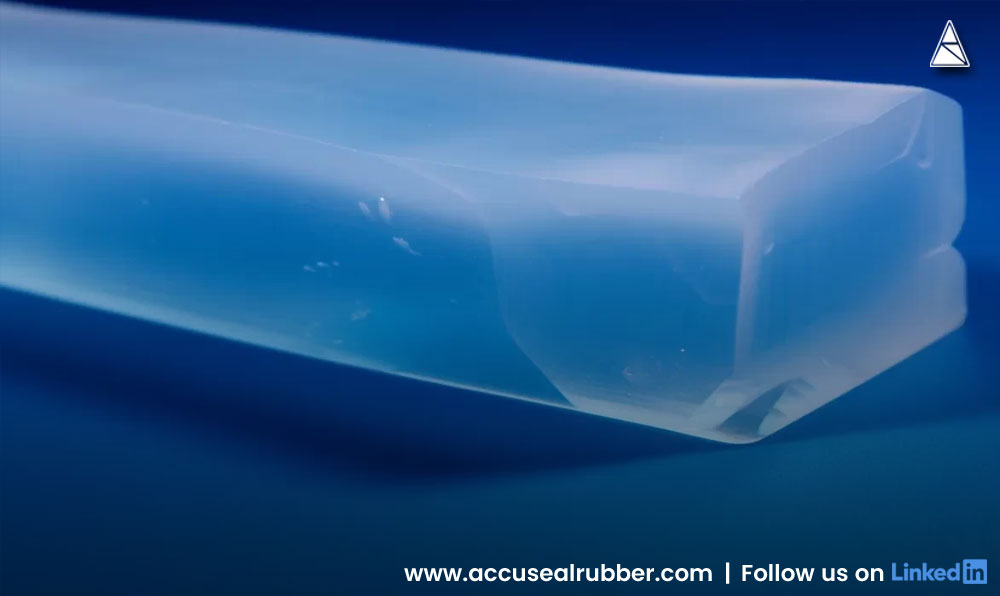Choosing the right rubber compound is critical to ensuring that your product performs optimally and meets specific industry requirements. Whether you’re developing seals, gaskets, hoses, or other rubber components, selecting the right rubber material can make a significant difference in performance, longevity, and cost-efficiency. In this guide, we’ll walk through the key factors to consider when choosing the right rubber compound for your application.
1. Understand Your Application Requirements
Before selecting a rubber compound, it’s essential to identify the specific requirements of your application. Consider the following factors:
Temperature Range: Will the rubber need to withstand extreme temperatures, either hot or cold? For high-temperature applications, compounds like silicone or fluoroelastomer (FKM) may be more appropriate. For low temperatures, EPDM or nitrile rubbers offer flexibility and durability.
Chemical Resistance: Consider whether the rubber will be exposed to harsh chemicals, oils, fuels, or solvents. Nitrile rubber (NBR) and fluoroelastomer are excellent choices for resistance to oils and fuels, while EPDM works well in environments exposed to water, steam, or chemicals like acids and alkalis.
Abrasion and Tear Resistance: If your product needs to endure significant wear and tear, compounds like natural rubber (NR) and polyurethane are known for their excellent abrasion resistance. These materials are ideal for applications like conveyor belts, tires, or industrial hoses.
Weather and Ozone Resistance: For outdoor applications, EPDM and silicone are ideal due to their superior weather, UV, and ozone resistance. These compounds maintain their integrity even after prolonged exposure to the elements.
Flexibility: If flexibility and elasticity are key, natural rubber and silicone stand out. They offer high flexibility across different temperatures, making them suitable for dynamic sealing and vibration isolation applications.
2. Know the Industry Standards and Certifications
Different industries have specific standards and certifications that rubber compounds must meet. These standards are crucial to ensuring safety, durability, and compliance. Here are some common ones:
FDA Compliance: For applications in the food and beverage or medical industries, rubber compounds need to comply with FDA standards to ensure they are safe for contact with food and pharmaceuticals. Silicone and EPDM are often used for FDA-approved applications.
ASTM Standards: The American Society for Testing and Materials (ASTM) provides a set of standards that rubber compounds must meet for different applications, such as compression set, tensile strength, and hardness. Ensure your chosen material meets relevant ASTM specifications for your industry.
Automotive Standards: For automotive applications, rubber materials should meet specifications such as SAE and OEM standards, particularly for seals, hoses, and gaskets exposed to fuel, oil, or extreme temperatures.
3. Consider the Rubber’s Physical Properties
Every rubber compound has unique physical properties that determine its performance in different environments. When selecting a rubber compound, it’s important to consider:
Hardness (Durometer): The hardness of a rubber compound is measured on the Shore A scale, with higher numbers indicating harder materials. For example, softer compounds (40-50 Shore A) like natural rubber provide greater flexibility, while harder compounds (70-90 Shore A) like nitrile offer higher abrasion resistance.
Tensile Strength: This measures the material’s ability to withstand pulling forces. Applications that involve stretching or pulling require compounds with high tensile strength, such as silicone or natural rubber.
Compression Set: This refers to the material’s ability to return to its original thickness after being compressed. Applications like gaskets and seals that are constantly compressed should use compounds with low compression set, such as EPDM or fluoroelastomer.
4. Review Environmental Conditions
Rubber components may be exposed to a range of environmental conditions, such as:
UV Exposure: For outdoor applications, prolonged exposure to ultraviolet (UV) light can degrade certain rubber compounds. EPDM and silicone are well-suited for outdoor environments due to their UV resistance.
Ozone Exposure: Rubber parts used in environments with high ozone levels, such as automotive applications, need to be ozone-resistant. EPDM and neoprene offer excellent ozone resistance and are ideal for these conditions.
Moisture and Steam: Rubber components exposed to moisture or steam need to resist swelling and degradation. EPDM is highly resistant to both water and steam, making it ideal for use in plumbing seals or steam hoses.
5. Factor in Cost Efficiency
While selecting a rubber compound, consider the balance between performance and cost. Some high-performance rubber compounds, like fluoroelastomers, offer excellent resistance to heat, chemicals, and abrasion but come with a higher price tag. On the other hand, natural rubber or SBR (Styrene-Butadiene Rubber) may be more affordable alternatives for applications where extreme resistance isn’t necessary.
Assess the total cost of ownership, including the material’s expected lifespan and maintenance requirements, to ensure you’re getting the best value for your application.
6. Consult a Rubber Expert
While understanding the properties of various rubber compounds is important, consulting with an expert can help you make the best decision for your specific application. At Accuseal Rubber Inc., our team has decades of experience in rubber compounding and manufacturing, ensuring that our customers receive the highest-quality materials tailored to their needs.
Our experts will work closely with you to assess your application’s specific requirements and recommend the ideal rubber compound that meets industry standards while optimizing performance and cost-efficiency.
Choosing the right rubber compound for your application involves careful consideration of factors like temperature resistance, chemical exposure, physical properties, environmental conditions, and cost. By understanding your application’s specific needs and consulting with rubber experts, you can ensure optimal performance and longevity for your rubber components.
At Accuseal Rubber Inc., we specialize in helping businesses find the perfect rubber compound for their applications. Contact us today to learn more about our wide range of rubber materials and how we can tailor solutions to meet your exact specifications.

 Nick Parker
Nick Parker